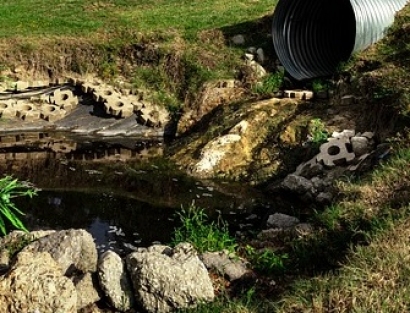
Water Use in Energy Production
Almost all energy production relies on the use of vast amounts of water across many different power plants. Most power plants around the world burn fuel such as gas or coal to produce energy. The tremendous heat this process generates boils water, thus emitting a surplus of steam within the plant. The steam is responsible for spinning the turbines, which can generate electricity. Also, the refinement of transportation fuels, mining coal, growing crops for biofuels and extracting specific sources of petroleum all require the use of water. If we do not drastically change our methods of energy production, there will be permanent ramifications to our environment.
The Consequence of Avoiding Sustainable Energy Production: Water Pollution
Due to the link between water and energy, issues for one source can create enormous problems for the other. This predicament leads to dangerous implications for water pollution in the nearby water source of energy plants. The water used for once-through coal plants usually gets pumped directly back into its source. The wastewater is considerably warmer, creating thermal pollution, which can increase the heart rate of sea animals and decrease their fertility. When the water returns to its source of rivers, lakes, streams and oceans, it is often dangerously toxic for humans and the environment.
In contrast, wet-recirculating plants bypass this issue of extensive water pollution by employing water-cooling systems. However, in the process, these plants consume more water — up to billions of gallons each year. The time to fundamentally change the way the energy industry functions is now.
Solutions for the Energy Industry to Decrease Water Pollution
Many technology leaders are shaping solutions for various plants to address the water-related impacts of energy production. Some of the most common solutions to decreasing water pollution include:
In 2017 alone, about 80% of U.S. and Canada electricity production involved the use of non-renewable sources. The industries in these countries that used the most energy include the industrial, transportation, residential and commercial sectors. Although experts have recognized the need for change, and energy leaders have made small strides in recent years, the industry overall has a long way to go to attain a brighter future.
The Bottom Line: Limit the Pollution of Water in Energy Production
As an energy professional or concerned individual involved in the energy industry, it is essential to fully understand the severity of the issue at hand when determining how energy production impacts and fuels water pollution. The way the population decides to use water in the future for this production will ultimately affect the bodies of water our nation and the entire world depend upon.

